Key Takeaways:
- Finding the right forex trading strategy is crucial for success in the forex market. Different strategies cater to different market conditions and trading preferences.
- Some popular forex trading strategies include range trading, carry trade, trend trading, day trading, scalping, and swing trading. Traders should choose strategies that align with their trading goals and risk tolerance.
- When choosing a forex trading strategy, factors to consider include fundamental analysis, technical indicators, news-based events, macroeconomic environment, and cyclical trends. A comprehensive understanding of these factors helps in making informed trading decisions.
- Steps to develop and implement a forex trading strategy involve research and education, paper trading, using demo accounts, maintaining a track record, identifying entry and exit points, and practicing proper position sizing and risk management techniques.
- Common mistakes to avoid in forex trading strategies include overtrading, lack of risk management, emotional trading, and ignoring fundamental analysis. Traders should be disciplined and adhere to their trading plan.
- The right forex trading strategy can make a significant impact on a trader’s success. It helps in maximizing profits, minimizing losses, and building a consistent trading approach.
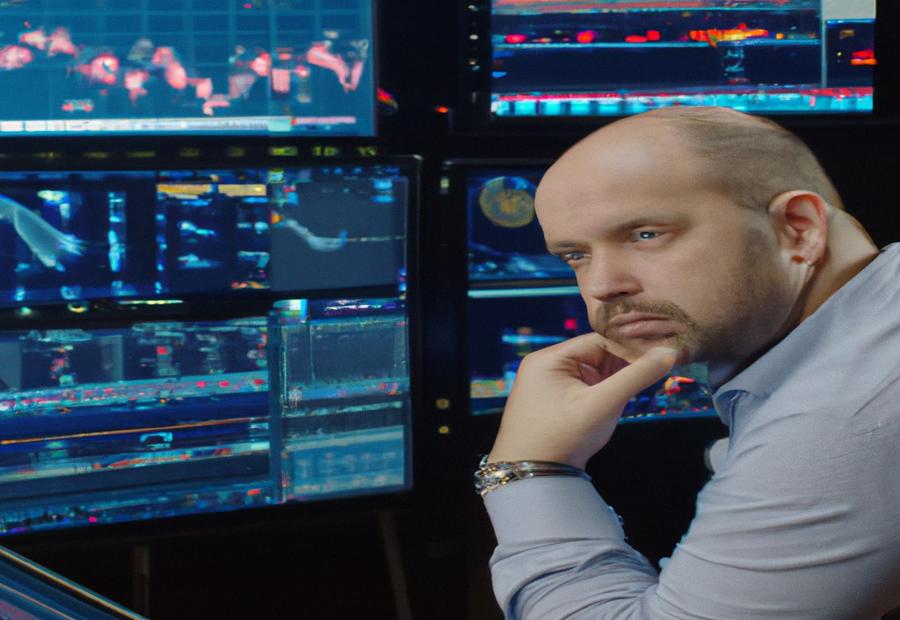
Photo Credits: Www.Reviews360D.Com by Joshua Taylor
Forex trading strategies are key to success in the volatile world of currency trading. In this section, we’ll explore the ins and outs of these strategies and how they can impact your trading journey. From an overview of forex trading to the importance of finding the right strategy, we’ll equip you with the knowledge to make informed decisions and navigate the complexities of the forex market efficiently. So, let’s dive in and discover the essentials of forex trading strategies.
Overview of Forex Trading
Forex trading, or foreign exchange trading, is when people buy and sell currencies in the global foreign exchange market. People do it to make money from changes in currency exchange rates. This market is super liquid and isn’t controlled by anyone, making it the world’s biggest financial market.
Traders go directly or use intermediaries such as brokers. The market is open 24/7, five days a week, so traders from any time zone can join in.
The goal is to make money from currency price movements. You can buy a currency when it’s cheap and sell it when it’s valuable – this is called ‘going long’ or taking a ‘long position’. The opposite is true too – sell a currency when its value is high and buy it back when it’s low – ‘going short’ or taking a ‘short position’.
Forex trading strategies are what help traders succeed. Strategies decide how traders analyse the market, find points to enter and exit trades, and manage risk. There are many types of strategies, like range trading, carry trade, trend trading, day trading, scalping, and swing trading. Every strategy has its own rules and indicators that help traders make good decisions.
When deciding which forex trading strategy to use, several things must be taken into account. Economic news releases and geopolitical events will affect currency prices. Technical indicators give insight into price patterns and trends, to help with trading decisions. Macroeconomic factors and cyclical trends also shape the forex market.
Making and using a strategy requires learning about the market and analysis techniques. Traders can practice on virtual platforms or demo accounts. Keeping track of trades helps traders see how their strategy works and if they need to change anything.
Common mistakes with forex trading strategies are overtrading, no risk management, emotions taking over, and ignoring fundamental analysis. By avoiding these, traders can increase their chances of success.
True Fact: The global forex market has an average daily turnover of over $6.6 trillion – Bank for International Settlements.
Importance of Finding the Right Forex Trading Strategy
Choosing the right forex trading strategy is vital for success in forex trading. It can either lead to profits and consistent returns, or it can result in significant losses.
Different strategies cater to different market conditions and trading styles. Range trading works best in sideways markets, while carry trade focuses on interest rate differentials. Trend trading strategies attempt to capitalize on price movements in one direction. Short-term trades with quick entry and exit points are employed in day trading and scalping. Swing trading strategies look at price fluctuations over days or weeks.
Many factors need to be taken into account when choosing a strategy. Economic indicators, central bank decisions, technical indicators, news-based events, macroeconomic environment, and cyclical trends all impact currency values.
It’s important to research and educate oneself about the foreign exchange market to create and implement a successful strategy. Paper trading and demo accounts allow traders to practice without risking real money. Keeping track of the strategy’s performance helps evaluate its effectiveness over time. Identifying appropriate entry and exit points, as well as employing position sizing and risk management techniques, are essential for successful implementation.
Traders should avoid some common mistakes, such as overtrading, lack of risk management, emotional trading, and ignoring fundamental analysis. These can all lead to unnecessary risks and potential losses.
Different Types of Forex Trading Strategies
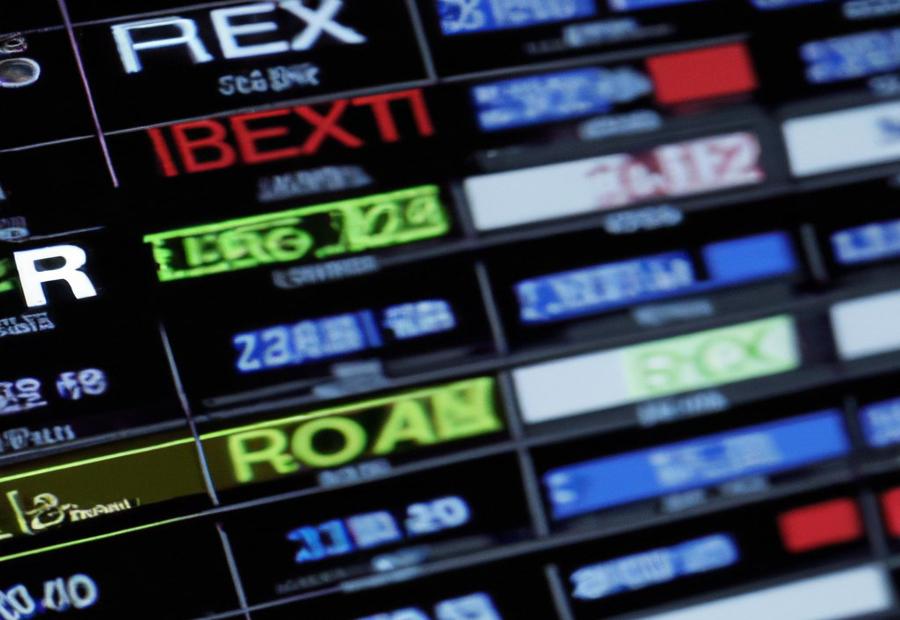
Photo Credits: Www.Reviews360D.Com by Eugene Scott
Unlock the world of Forex trading strategies! Discover a range of powerful techniques to enhance your trading skills. Dive into the nuances of range trading, carry trade, trend trading, day trading, scalping, and swing trading. Each sub-section holds its own unique approach and potential for success. Get ready to explore and master these different strategies, opening up a world of possibilities in the Forex market.
Range Trading Strategy
Traders identify key support and resistance levels as potential areas to profit. These usually occur where price has reversed in the past. Buy at support, sell at resistance – that’s the name of the game! To validate entry and exit points, traders often use technical indicators like moving averages and oscillators.
Patience and discipline are key, as you wait for a breakout or reversal. Risk management is also essential, since unexpected breakouts or breakdowns can lead to losses.
For different market conditions, you can use variations of the Range Trading Strategy. For example, narrower ranges in low volatility markets or wider ranges in more volatile ones. Monitor the market and adjust your entry and exit points accordingly.
Ready to take your trading to new heights? Try the Carry Trade Strategy! It allows you to benefit from currency gains and heavy suitcases.
Carry Trade Strategy
The carry trade strategy is used in forex trading. It involves borrowing funds in a low-interest-rate currency and investing them in a high-interest-rate currency. The aim is to profit from the interest rate differential. Plus, capital gains may be possible as well.
This strategy relies on understanding macroeconomic factors, like central bank policies, economic growth prospects, and inflation rates. This helps traders pick currencies with attractive interest rate differentials.
However, risk management is necessary. Potential exchange rate fluctuations, geopolitical events, liquidity conditions, and changes in monetary policies must be assessed. Position sizing and risk management techniques should also be employed to mitigate these risks.
Pro Tip: Traders should keep up with global economic developments and policy changes, as they can have a big impact on interest rates and exchange rates.
Trend Trading Strategy
Trend trading is a popular strategy used to make a profit. By looking at price charts and indicators, traders try to identify the trend of the market and enter trades accordingly. This strategy is based on the idea that when a trend is established, it is more likely to continue rather than reverse.
To effectively use trend trading, research and analysis of historical data is important. Traders should look at different time frames and use indicators like moving averages, trend lines, and momentum indicators.
Identifying entry points is also important. Traders should look for opportunities to enter trades in the direction of the trend. This can be done by waiting for price pullbacks or breakouts from support or resistance levels. Confirmation signals like candlestick patterns or oscillator indications can also help.
Setting stop-loss levels is key to limit losses if the market reverses. Traders should decide appropriate stop-loss levels and consider placing orders below or above support or resistance levels.
When the market reaches target levels, traders should take profits. Targets should be based on previous price swings or Fibonacci retracement levels.
Continuous monitoring and adjustment of the strategy are necessary. Traders should always watch the market and adjust their strategy accordingly. If there are signs of a changing trend or sentiment, they should consider closing positions or changing the stop-loss levels.
Trend trading strategies can work in trending markets, but no strategy guarantees success. Markets can be unpredictable. To increase the effectiveness of a trend trading strategy, traders should update their knowledge of tools and indicators. Watching news and events that could impact market sentiment is also important. Risk management, such as position sizing, diversification, and realistic expectations, should be practiced. Finally, discipline and avoiding emotional decisions will help protect against losses.
By following these tips, traders can improve their chances of success when using trend trading. Consistency and adaptability are key. Remember to trade with caution and consider using the Day Trading Strategy for protection.
Day Trading Strategy
Day trading strategies are a method forex traders use to make short-term trades within one trading day. The goal is to benefit from intraday price movements. Traders use technical analysis indicators to recognize short-term trends and patterns.
Here is a 6-step Guide to an efficient day trading strategy:
- Spot pairs with high liquidity: Focus on currency pairs that have high trading volume and liquidity. These tend to have narrow spreads and greater volatility, which offers more chances for day trading.
- Establish entry and exit points: Using technical analysis indicators such as moving averages, support and resistance levels, or trend lines, decide particular entry and exit points for your trades. These signals can help you enter trades at favorable prices and leave with profits or minimal losses.
- Employ stop-loss orders: Use strict risk management techniques by placing stop-loss orders to limit loss if the market moves against your position. This will protect your capital and prevent major drawdowns.
- Monitor market conditions: Always monitor market conditions throughout the day. This includes news releases, economic events, and any other factors that could affect currency rates. Stay up to date on relevant economic data, as they can significantly influence market volatility.
- Have a disciplined attitude: Stick to your predetermined trading plan and strategies without being influenced by emotions or impulsive decisions. Maintain discipline in taking only high-probability trades that align with your predefined criteria.
- Utilize proper position sizing: Calculate the suitable position size for each trade based on your account balance, risk tolerance, and desired risk-reward ratio. It is important to manage risk effectively by not risking too much of your capital on individual trades.
By following these steps, forex traders can achieve a successful day trading strategy that fits their trading style and objectives.
Day trading strategies need focusing on technical analysis and continuously monitoring market conditions to find profitable opportunities. Furthermore, traders should be familiar with risk management and have a disciplined approach to trading.
It is worth noting that day trading is very demanding and requires a lot of time, as traders need to watch price movements throughout the day. Therefore, it is essential to have a strong understanding of the markets as well as the ability to make quick decisions based on technical analysis indicators.
A true fact: Day trading strategies are popular among forex traders because of their potential for quick gains. A study conducted by the Forex Brokers Association showed that about 40% of individual forex traders use day trading strategies.
Scalping Strategy
- Scalping Strategy is all about making fast, small trades to benefit from short-term price fluctuations.
- Traders who use this method pursue small profits seen in tiny changes in market prices.
- Scalpers utilize technical analysis and indicators, chart patterns to spot entry and exit points.
- This strategy requires swift execution and consistent focus on the market.
- The scalping strategy is characterized by high trading volume and low profit per trade.
- In comparison to other trading tactics like range trading and trend trading, scalpers try to grab multiple openings in quick succession, rather than holding positions for a long time.
- By keeping an eye on the market and taking advantage of the tiniest price variations, scalpers may be able to score steady gains throughout the day without depending much on big market trends.
- Swing Trading Strategy: A whimsical way of navigating the market, where you waltz your way to profits and dodge getting knocked out.
Swing Trading Strategy
Swing Trading Strategy is a popular approach for traders in the forex market. This method enables traders to benefit from short-term price changes and make gains while the market swings. To employ this strategy, traders focus on recognizing key support as well as resistance levels, which serve as entry and exit points for trades.
Technical analysis tools are important for swing trading strategies. Traders depend on trendlines, moving averages, and oscillators to detect potential entry and exit points. By utilizing these indicators, traders can spot reversal points or continuation patterns that suggest a high-probability trade setup.
In swing trading, traders aim to make money from both upward and downward price movements. They look for opportunities in both trending markets and range-bound markets. When prices are close to support levels in an uptrend or resistance levels in a downtrend, traders enter trades. The aim is to go along with the price swings until they reach a predefined target or until there is evidence of a trend reversal.
One of the benefits of swing trading is that it permits traders to avoid the noise and volatility related to intraday trading or long-term investing. It provides a balanced approach between active trading and longer-term investments, offering traders the chance to take advantage of market opportunities without constantly monitoring their positions.
However, swing trading does need a good comprehension of technical analysis, risk management, and market dynamics. Traders must stick to a disciplined risk management practice to reduce the possibility of false breakouts or reversals that can lead to losses. By carefully following their trading plan and adjusting strategies based on market conditions, swing traders can enhance their chances of success in the forex market.
All in all, swing trading can be a successful strategy for traders who have the time, patience, and knowledge to study the markets and make informed trading decisions. By incorporating a swing trading strategy into their trading approach, traders can take advantage of short-term price movements and increase their chances of success in the forex market.
Factors to Consider in Choosing a Forex Trading Strategy
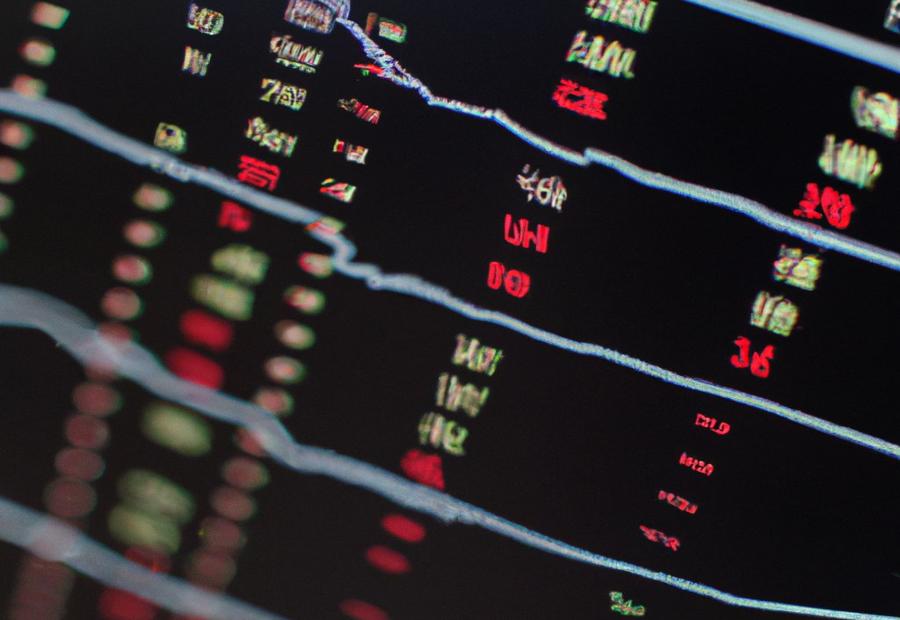
Photo Credits: Www.Reviews360D.Com by Gabriel Thompson
When choosing a forex trading strategy, several factors come into play. From fundamental factors and technical indicators to news-based events and the macroeconomic environment, each sub-section of this section will guide you through the essential considerations for developing a successful forex trading strategy.
Fundamental Factors
Fundamental factors are vital for forex trading. They include economic and political conditions that can influence currency values. These factors include: interest rates, GDP growth, employment data, inflation rates and geopolitical events. Traders analyse these factors to decide when to buy or sell currencies.
A list of key factors can be created. E.g. interest rates, GDP growth, employment data, inflation rates and geopolitical events. Each factor has an influence on currency valuations.
Plus, there are other unique details that can affect currency markets. Such as central bank policies, trade balances, consumer sentiment and fiscal policies. It’s important to watch these factors as they can have a big effect on currency movements.
To use fundamental factors well in forex trading strategies, traders should do several things. Stay up-to-date with economic news and reports. Monitor central bank statements and actions. Analyse economic indicators from different countries and understand how they relate to each other. Assess how geopolitical events might affect currency movements.
By following these steps and using fundamental analysis, traders can gain a better understanding of market dynamics. This increases the chances of making profitable trades based on fundamental factors.
Technical Indicators
Technical indicators are essential in forex trading. They offer insight into market behaviour and help traders make educated decisions. These indicators are calculations based on price and volume data from the past. They can classify into trend-following, oscillators, volatility and volume indicators.
For instance, trend-following indicators uncover the direction of the market trend. Examples include Moving Averages, Trendlines and Parabolic SAR. Oscillators detect overbought or oversold conditions. Examples include Relative Strength Index (RSI) and Stochastic Oscillator.
Volatility indicators measure the degree of variation in prices. Bollinger Bands and Average True Range (ATR) are known examples. Volume indicators measure the interest in the market. Examples include On-Balance Volume (OBV) and Volume Weighted Average Price (VWAP).
Each trader will select different combinations of technical indicators depending on their approach and strategy. It’s important to understand the strengths and restrictions of each indicator and how to use them together.
However, don’t rely entirely on technical indicators when making decisions. Combine them with fundamental analysis to get a full view of the market. Remember to brace yourself for extreme price fluctuations with news-based events and stick to your trading plan!
News Based Events
Market Reaction: News-driven events can cause high market volatility. This can lead to substantial price changes and offer chances and risks for traders.
Fundamental Analysis: News-based events are key in fundamental analysis. This involves evaluating economic indicators and other aspects that could affect currency values. Traders use these events to assess an economy’s overall health and make informed trades.
Timing: Timing is essential when trading news-driven events. Traders must be aware of important announcements and act quickly to benefit from potential market fluctuations.
Risk Management: News-based events also up the risks of forex trading. Traders must use risk management techniques, such as setting stop-loss orders and managing position sizes, to protect against major losses.
Information Sources: To remain updated on news-driven events, traders rely on varied sources, such as financial news sites, economic calendars, and statements from central banks and government agencies.
Macroeconomic Environment
The macroeconomic environment is key to forex trading. It includes economic growth, inflation, job numbers, and central bank policies. These have a major effect on currency markets and can heavily influence trading strategies.
Traders must analyze the macroeconomic environment to make smart trading decisions. They should watch economic data releases and central bank news to assess an economy’s health and its impact on currency values. By tracking these factors, traders can see trends and patterns that can help guide their strategies.
Also, the macroeconomic environment is critical for market sentiment and investor trust. Positive signs like strong GDP growth or low unemployment can increase the demand for a currency. On the other hand, bad economic news can cause a drop in currency values.
The macroeconomic environment is important to forex traders when creating their trading strategies. By using fundamental analysis, traders can comprehend the forces that shape currency movements and modify their positions accordingly.
In conclusion, the macroeconomic environment has a big impact on forex trading strategies. To make smart choices, traders must understand economic indicators and follow central bank policies. By staying aware of the macroeconomic factors that affect currency markets, traders can increase their chances of success in forex trading. Forex trading has the potential to be lucrative, if cyclical trends are successfully ridden.
Cyclical Trends
Cyclical trends in forex trading are patterns and fluctuations that occur over time. These are impacted by various factors, like economic cycles, interest rates, geopolitical events, and market sentiment. Traders use technical analysis tools and indicators to study these cyclical trends. For example, moving averages, oscillators, and Fibonacci retracement levels. This helps them make decisions on when to enter or exit trades.
Factors influencing cyclical trends include:
- Economic cycles
- Interest rates
- Geopolitical events
- Market sentiment
Economic cycles involve periods of expansion and contraction. Interest rates can affect investment flows and currency valuation. Geopolitical events, such as elections or political instability, can cause volatility in the market. Trader sentiment reflects their collective expectations and behavior.
When creating a forex trading strategy, remember to include risk management.
Steps to Develop and Implement a Forex Trading Strategy
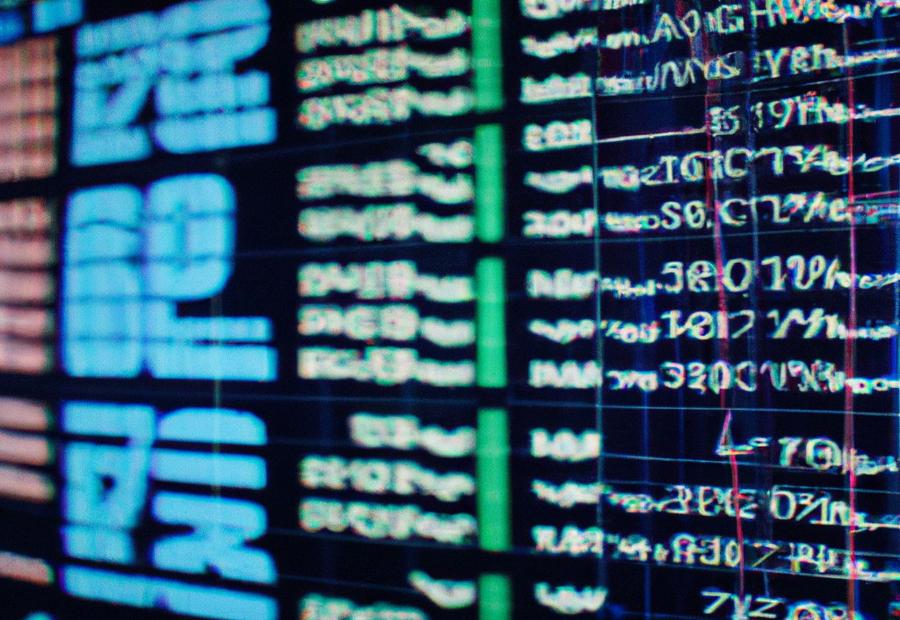
Photo Credits: Www.Reviews360D.Com by Billy Rivera
Developing and implementing a forex trading strategy requires a series of key steps that can greatly impact your success in the market. From conducting thorough research and education to effectively managing risk through position sizing techniques, each sub-section in this section delves into crucial aspects that can help you navigate the forex market with confidence. Let’s explore these steps in detail and equip ourselves with the necessary tools for successful forex trading.
Research and Education
Research and education are key to creating a successful forex trading plan! To gain understanding and knowledge to augment your trading style and decision-making process, researching currency pairs, economic indicators, and geopolitical events is a must.
Additionally, staying abreast of technical analysis tools and indicators will help you spot patterns, trends, and likely entry and exit points. Read books, take online courses, or get mentorship from experienced traders to gain valuable insights into different trading strategies and risk management tactics.
Also, stay up-to-date on financial news and market analysis for potential opportunities or risks in the forex market. Analyzing historical data and testing various trading strategies lets you evaluate which strategies work best in different market conditions.
By dedicating time to research and education, you can build an understanding of both fundamental factors like economic data or political developments, and technical indicators. This combined knowledge helps you adapt your strategies to changing markets and increase your chances of making a profit in forex trading.
Don’t forget that learning continuously is extremely important! Invest in your education by researching new techniques, staying informed on market trends, and seeking guidance from experienced professionals. This way, you’ll be better equipped to make informed decisions when entering trades.
Before paper trading, keep in mind that even the best strategy won’t make monopoly money feel any less imaginary!
Paper Trade
‘Paper Trade’ is a Forex trading strategy where traders simulate trading activities without investing real money. This allows them to gauge the effectiveness of their chosen strategy in a risk-free environment.
To understand this concept better, let’s take a look at a table outlining some aspects of ‘Paper Trade’:
| Aspect | Description |
|---|---|
| Strategy | The trading strategy being tested. |
| Entry Points | Conditions or indicators that signal when to enter a trade. |
| Exit Points | Conditions or indicators that signal when to exit a trade. |
| Success Rate | Percentage of trades executed successfully. |
| Lessons Learned | Insights and observations from implementing the strategy. |
By using ‘Paper Trade’, traders can analyze strategies and their entry/exit points, refining their approach and increasing success rates. Additionally, they can identify flaws or areas of improvement in their strategies, aiding decision-making when moving to live trading.
It’s worth noting that ‘Paper Trade’ is essential before risking real capital in the market. Traders must evaluate strategies using historical data, technical indicators, and market trends while utilizing risk management techniques.
For example, a trader paper trades a day trading strategy for several weeks. They realize their entry points are accurate, but have difficulty with exit points. So, they adjust their strategy by adding more technical indicators to identify optimal exit points. As a result, their success rate improves when applying the modified strategy during live trading.
By engaging in ‘Paper Trade’ and learning from simulated trading experiences, traders can enhance their skills, improve decision-making abilities, and increase their chances of success when trading in the Forex market.
Demo Account
A demo account is an invaluable tool for traders to hone their forex trading strategies and learn in a danger-free setting. With no real money needed, traders can try out all the features and functionalities of a platform.
Traders can trade in real-time market conditions without any financial cost. They can study the graphs, make trades, and check their performance without taking any risks. This access to real-time market conditions is a key part of a demo account.
Plus, traders can test different forex trading tactics with a demo account. They can tinker with various indicators, timeframes, and entry/exit points to discover which strategy works best for them. This testing of strategies is crucial for traders to find their most effective way.
By practicing trading on a demo account, traders can grow their faith in their own abilities. As they get more used to the dynamics of the forex market through practice, they can make wiser decisions when they move to live trading. It also provides a chance for traders to develop strong risk management techniques.
Also, a demo account helps traders get acquainted with the platform’s characteristics and functionalities. They can practice putting orders, setting stop-loss levels, and managing their positions well. This knowledge with the platform is an important aspect of using a demo account.
By taking advantage of a demo account, traders can develop their skills and boost their chances of success when they start trading with real money. Therefore, a demo account is an important tool for traders to upgrade their trading abilities.
Track Record
A track record in forex trading refers to a documented history of a trader’s past performance. It gives insights about their abilities, consistency, and profitability. Evaluating a trader’s track record is key when selecting a trading strategy.
Factors to assess include:
- # of trades
- % of profitable trades
- size of winning/losing trades
- drawdown
- ROI
These factors give insights on risk appetite and ability to generate profits.
It is important to consider how long the track record spans. A longer track record provides more confidence. Also, verify its authenticity – check for independent verification and 3rd-party audited results. Only then can investors make informed decisions.
Don’t miss out! Utilize the power of assessing a trader’s track record to select a successful forex trading strategy. Use this valuable info to make informed decisions and maximize returns.
Entry Points and Exit Points
Traders need tools to manage entry and exit points. Support and resistance levels show price points that the market has reversed or consolidated in the past. When prices break above a resistance level (bullish trend) or fall below a support level (bearish trend), traders might enter or exit a trade.
Moving averages help smooth out price data. A shorter-term moving average crossing above a longer-term one signals an uptrend. The opposite (shorter-term crossing below longer-term) indicates a downtrend.
Traders also use other technical indicators, like oscillators (e.g. Relative Strength Index) and chart patterns (e.g. head and shoulders). Combining these with fundamental analysis and market trends can improve their chances of successful trades.
Finding entry and exit points is key for successful forex trading strategies. Traders must analyze various factors, use different tools, and adjust their approach as the market changes. Thus they can boost their trading performance and achieve financial goals.
Position Sizing & Risk Management: Risk size determines reward size. Losing money is bad; losing more is worse.
Position Sizing and Risk Management Techniques
Calculating position sizes accurately is vital for traders. Factors like account size, risk tolerance, and market conditions must be considered. Potential gains and losses should be weighed and an appropriate position size selected.
Stop-loss orders are essential risk management tools that limit losses. Setting a predetermined level to close a trade if losses exceed a threshold protects against excessive losses.
Leverage allows traders to control larger positions with small capital. Leverage must be used responsibly, as excessive leveraging can amplify losses if trades go wrong.
Diversifying investments across different currency pairs or asset classes reduces exposure to any single investment. This minimizes the risk of huge losses if one trade or asset performs poorly.
Regularly reviewing and adjusting risk management strategies is important. Market conditions change, so strategies should be monitored and adjusted as needed. This ensures proper risk management and maximizes potential profits.
Drawdowns, success ratios, and average profits, among other performance metrics, provide insights into a trader’s position sizing and risk management approach.
Forex trading has risks, but with the right position sizing and risk management techniques, traders can aim for consistent profitability and minimal losses. Continuous monitoring and adjustment is necessary, as market conditions can fluctuate quickly. An adaptive approach to position sizing and risk management is key for success in the dynamic world of forex trading.
A fact: According to a study by the International Journal of Economics and Financial Issues, traders who employ effective risk management techniques have greater chances of long-term success in the forex market.
Common Mistakes to Avoid in Forex Trading Strategies
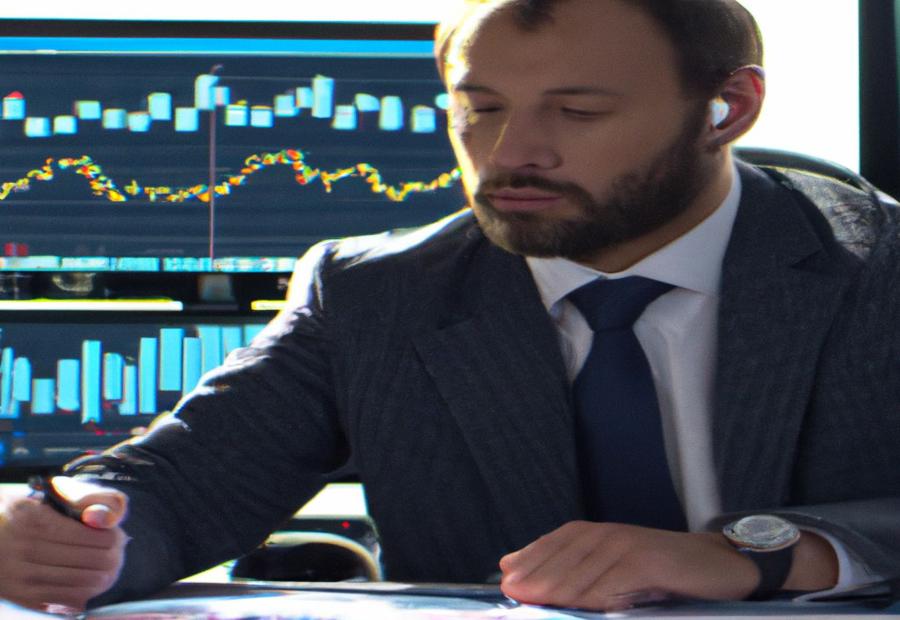
Photo Credits: Www.Reviews360D.Com by Ryan Lopez
In Forex trading strategies, avoiding common mistakes is crucial for success. Let’s uncover the most prevalent pitfalls to steer clear of, such as overtrading, lack of risk management, emotional trading, and ignoring fundamental analysis. By being aware of these pitfalls, traders can enhance their decision-making process and maximize their potential for profitable trades. Remember, understanding what not to do is just as important as knowing what to do in the dynamic world of Forex trading.
Overtrading
Traders who engage in overtrading may not have a plan or strategy. They may trade impulsively without analysing or considering market trends and economic indicators. This can lead to losses and lack of consistent profitability.
Emotions like greed and fear can fuel overtrading. Traders may feel the need to be in the market, even when no opportunities exist. This can result in irrational trades based on fear of missing out.
To avoid overtrading, traders should have a strategy and follow it. This includes setting entry and exit points, plus using risk management to limit losses. Do not make trades based on emotions, but rely on objective analysis and logical decisions.
Trading without risk management is like walking a tightrope without a safety net – it’s a catastrophe waiting to happen.
Lack of Risk Management
Risk management is key for Forex traders. It’s the process of minimizing losses and protecting capital. Forgetting to manage risk is a common mistake, and it can lead to big losses.
Position size should match risk tolerance and account balance. Stop-loss orders help get out of trades automatically if losses reach a certain level. Diversifying investments also reduces risk.
Traders must keep track of past trades and analyze performance. This helps identify mistakes which led to losses, so they don’t happen again. Emotional trading can be dangerous; your profit takes a hit when your heart is in control!
Emotional Trading
Trading in the forex market can be impacted by emotions. This can lead to hasty decisions and financial losses. Emotions such as fear, greed, and impatience can blur a trader’s judgement. Awareness of the effects of emotions on trades is key to keeping discipline and avoiding costly mistakes.
Points about Emotional Trading:
- Emotional trading can cause taking on too much risk. It can also make traders overly confident during success and panicked during losses.
- Traders who engage in emotional trading act without a plan – they react quickly to market changes.
- Fear of missing out (FOMO) can drive emotional trading – traders may enter a trade without thinking of the long-term.
- Emotions can be caused by external factors such as news or rumors. This can lead to hasty decisions.
- Emotional trading can make traders lose trust in their own skills, leading to more emotional decisions.
- To overcome emotional trading, traders should focus on discipline and following a strategy founded on analysis.
Setting clear rules and guidelines for trading can help traders stay away from impulsive decisions driven by emotion. Understanding the psychology of trading and managing emotions properly is essential for becoming a successful forex trader.
Ignoring Fundamental Analysis
Ignoring fundamental analysis when creating forex trading strategies is a common mistake. Fundamental analysis involves studying economic factors that can influence currency values, such as interest rates, GDP growth, inflation, and geopolitical events. When these are disregarded, traders miss out on useful information that can help them make more informed decisions.
Economic factors can have a huge impact on currency values. By disregarding them, traders may be trading based on technical indicators or other types of analysis alone. This can lead to missed opportunities or higher risk.
Fundamental analysis helps traders gain a better understanding of the market and spot potential trading opportunities. It also enables them to predict market movements better and adjust their strategies accordingly.
Technical indicators and news-based events are important, but fundamental analysis is essential for a well-rounded forex trading strategy. Ignoring this type of analysis can mean relying too much on short-term price movements and missing out on long-term trends or major market changes.
In conclusion, overlooking fundamental analysis in forex trading strategies can be costly. Traders should take the time to comprehend economic factors that can affect currency values to develop more successful strategies.
Conclusion: Importance of Finding the Right Forex Trading Strategy

Photo Credits: Www.Reviews360D.Com by Patrick Scott
Finding the best forex trading strategy is essential in the forex world. It can make a difference between success and failure. It’s important to have a strategy that suits your individual trading style and risk tolerance. This will help you get profits and reduce losses.
Understanding the different types of strategies is key. Reference data mentions technical analysis – analyzing past price data to find patterns and trends. This is a popular method. Another strategy is fundamental analysis – analyzing economic indicators, news events, and market sentiment. Each has their own pros and cons. It’s essential to match the strategy to your trading goals.
Timeframes and risk management techniques are also important. Reference data talks about using multiple timeframes – short-term and long-term – to make decisions. Risk management techniques such as setting stop-loss orders and position sizes help too.
In summary, finding the right strategy is crucial for success. It involves knowing the different strategies, considering timeframes and risk management, and aligning it with your trading style. This increases profits and reduces losses.
Pro Tip: Finding the best forex trading strategy is an ongoing process. Evaluate and adjust to changing market conditions. Stay up-to-date on market trends and be willing to refine and improve your strategy.
Some Facts About Forex Trading Strategies:
- ✅ Forex trading strategies can be based on technical analysis or fundamental events. (Source: Team Research)
- ✅ Traders should backtest and paper trade their strategies before committing capital. (Source: Team Research)
- ✅ Forex trading strategies can be simple or complex. (Source: Team Research)
- ✅ Traders may need to change strategies if the risk vs. reward ratio is not suitable or if market conditions change. (Source: Team Research)
- ✅ It is important to fully understand a strategy before using it. (Source: Team Research)
FAQs about Forex Trading Strategies
What is a forex trading strategy?
A forex trading strategy is a technique used by traders to determine when to buy or sell currency pairs. It can be based on technical analysis or fundamental events and uses trading signals to trigger buy or sell decisions.
What are the components of a forex trading strategy?
The components of a forex trading strategy include selecting the market, position sizing, entry and exit points, and trading tactics. These elements determine the overall structure and approach to trading.
What are the different types of forex trading strategies?
There are various types of forex trading strategies, including scalping, day trading, position trading, price action trading, range trading, trend trading, and carry trade. Each strategy has its own focus and time horizon.
Should I use automated systems or manual systems for forex trading?
There are both automated and manual systems available for forex trading. Automated systems, like MetaTrader, can help automate rule-following and backtest strategies. However, manual systems may provide more flexibility and adaptability to changing market conditions.
How can I manage risk in forex trading?
To manage risk in forex trading, it is essential to use stop loss orders to limit potential losses. Additionally, traders should set daily risk limits to protect their accounts and capital. Proper risk management is crucial for long-term success.
How do I select the right forex trading strategy?
When selecting a forex trading strategy, traders should consider their goals and resources. It is important to choose a strategy that aligns with their trading style, time resource required, frequency of trading opportunities, risk-reward ratio, and typical distance to target.





